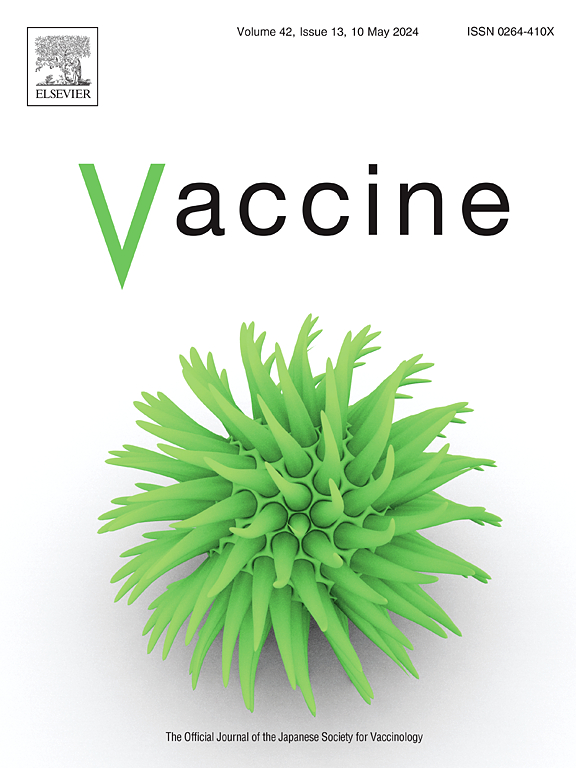Influenza strain-specific T cell responses longitudinally post-vaccination with FluZone
IF 4.5
3区 医学
Q2 IMMUNOLOGY
引用次数: 0
Abstract
Despite seasonal vaccination strategies, influenza viruses still cause significant morbidity and mortality. While vaccine efficacy is generally high, effectiveness varies from year-to-year and can be impacted by numerous host factors, including age, sex, obesity, and immune history. Therefore, understanding host immune factors that promote robust vaccine responses and protection from influenza infection and disease, is important for improving vaccine design and evaluation. This study focuses on influenza-specific T cells, an understudied component of influenza vaccination responses and long-term protection from infection.
This study measured influenza strain-specific T cell responses in 40 participants longitudinally following immunization with the inactivated, quadrivalent FluZone vaccine. Influenza-specific T cells were restimulated using live virus representing the four strains included in the FluZone construct. Strain-specific T cell responses were correlated with plasma chemokine and cytokine levels, and humoral immunity, quantified by hemagglutination inhibition assay.
Activated and degranulating T cells were frequently detected against all strains longitudinally post-vaccination and positively correlated with serological responses. Cytokine-producing T cells were less frequently detected, and they peaked early post-vaccination, concurrent with elevated plasma IFNγ and CCL4. Changes in strain-specific T cells post-vaccination and correlation with serological responses was stronger for influenza A subtypes than B subtypes.
Dynamics of cytokine-producing T cells early post-influenza vaccination may reflect ongoing immune responses, but activated and degranulating T cells better represent longitudinal changes in serological responses. Differences between T cells specific to influenza A and B subtypes warrant further investigation to understand why they diverge and the relevance to vaccine design and evaluation.
接种FluZone后流感毒株特异性T细胞纵向反应
尽管采取了季节性疫苗接种策略,但流感病毒仍然造成严重的发病率和死亡率。虽然疫苗的效力通常很高,但每年的效力不同,并可能受到许多宿主因素的影响,包括年龄、性别、肥胖和免疫史。因此,了解促进疫苗反应和预防流感感染和疾病的宿主免疫因子,对改进疫苗设计和评估具有重要意义。这项研究的重点是流感特异性T细胞,这是流感疫苗接种反应和长期保护感染的一个未被充分研究的组成部分。这项研究测量了40名参与者在接种灭活的四价FluZone疫苗后的流感毒株特异性T细胞反应。使用代表FluZone构建中包含的四种菌株的活病毒重新刺激流感特异性T细胞。菌株特异性T细胞反应与血浆趋化因子和细胞因子水平以及体液免疫相关,通过血凝抑制试验进行量化。接种疫苗后,所有菌株纵向检测到活化和脱颗粒T细胞,并与血清学反应呈正相关。产生细胞因子的T细胞较少被检测到,它们在接种后早期达到峰值,同时血浆IFNγ和CCL4升高。疫苗接种后菌株特异性T细胞的变化及其与血清学反应的相关性在甲型流感亚型中强于乙型流感亚型。流感疫苗接种后早期细胞因子生成T细胞的动态可能反映持续的免疫反应,但激活和脱颗粒T细胞更好地代表血清学反应的纵向变化。甲型流感和乙型流感亚型特异性T细胞之间的差异需要进一步研究,以了解它们差异的原因以及与疫苗设计和评估的相关性。
本文章由计算机程序翻译,如有差异,请以英文原文为准。
求助全文
约1分钟内获得全文
求助全文
来源期刊

Vaccine
医学-免疫学
CiteScore
8.70
自引率
5.50%
发文量
992
审稿时长
131 days
期刊介绍:
Vaccine is unique in publishing the highest quality science across all disciplines relevant to the field of vaccinology - all original article submissions across basic and clinical research, vaccine manufacturing, history, public policy, behavioral science and ethics, social sciences, safety, and many other related areas are welcomed. The submission categories as given in the Guide for Authors indicate where we receive the most papers. Papers outside these major areas are also welcome and authors are encouraged to contact us with specific questions.
 求助内容:
求助内容: 应助结果提醒方式:
应助结果提醒方式:


